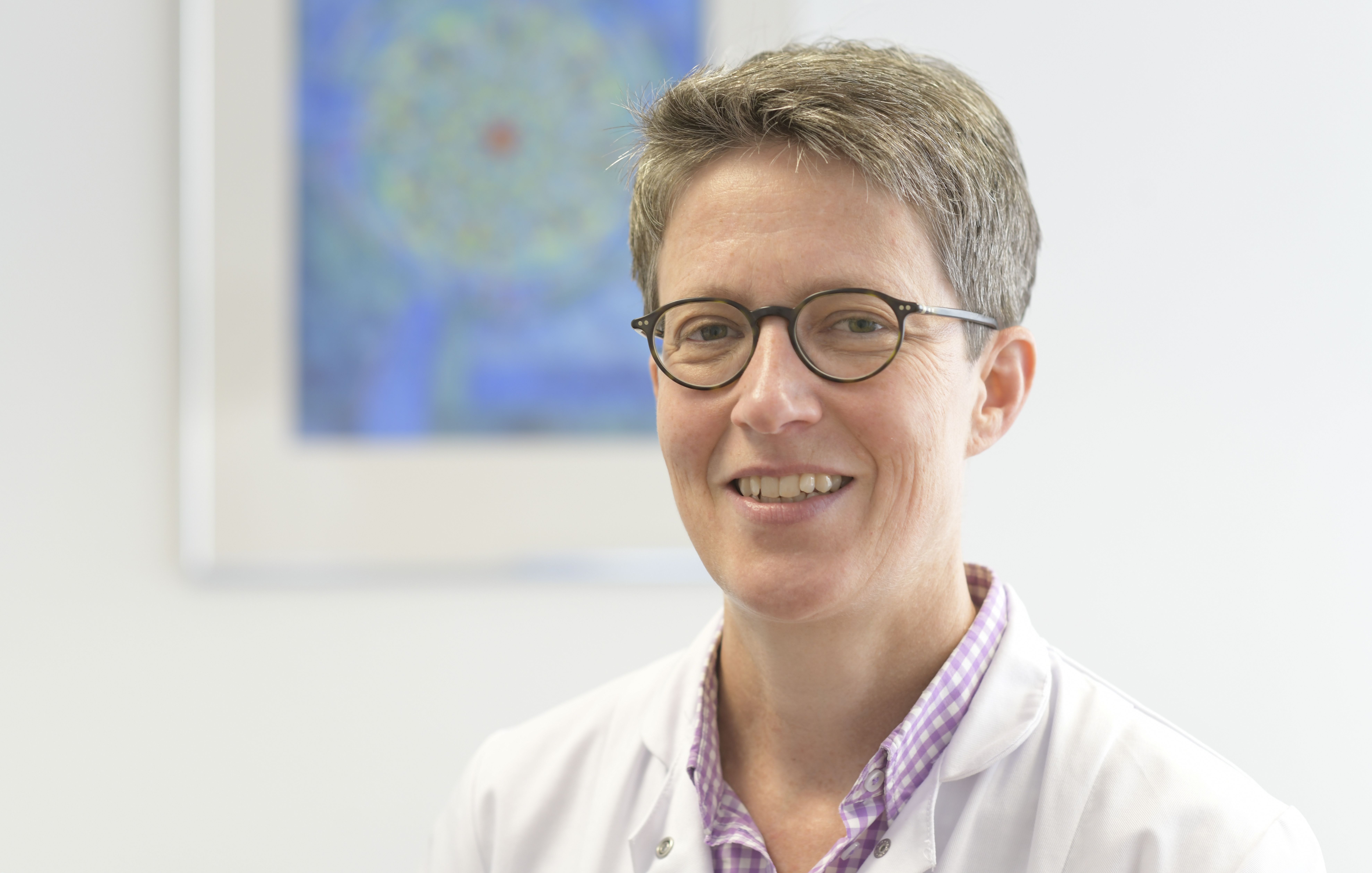User login
, not only in the distal colon itself, but the proximal colon and terminal ileum.
The noninvasive distal washes also reveal information on gene expression that can predict response to therapies in inflammatory bowel disease.
The findings, from the research group of Shalev Itzkovitz, MD, at the Weizmann Institute of Science in Rehovot, Israel, were published online in the journal Cellular and Molecular Gastroenterology and Hepatology.
Dr. Itzkovitz and his colleagues performed colonoscopies on 29 patients with ulcerative colitis (UC) and 30 with Crohn’s disease (CD) recruited from a single center, as well as 50 healthy controls. The researchers took biopsies and obtained fecal washes at different locations on the ileal-colonic axis. Results were analyzed using host transcriptomics, a method to determine which genes are being expressed in tissue samples.
While previous studies established the value of distal fecal washes in disease affecting the distal colon, Dr. Itzkovitz and colleagues found that the washes obtained from the distal colon contained accurate information “not only of distal colonic inflammation in UC patients, but also of CD inflammation, including when the inflammatory segments are ileal and no colonic involvement is observed.”
They also found that the distal fecal washes, including from CD patients with no distal involvement, showed gene expression of immune, stromal, and epithelial origin correlating with disease severity. The sequencing revealed “a strong transcriptomic signature of gene modules” seen in previous studies to be associated with response to biological therapies, the study authors wrote,
Remarkably, the transcriptomics from fecal washes were more sensitive and specific in revealing inflammation, compared with transcriptomics conducted on the tissue biopsies. “This higher statistical power may be a result of the fact that fecal washes capture cells that are shed throughout the gastrointestinal tract and therefore are not sensitive to the precise location from which a biopsy specimen is obtained,” the authors surmised.
Fecal wash host transcriptomics offer a noninvasive option, without the risks associated with colonoscopy, for selecting therapies in inflammatory bowel disease, the researchers wrote. “This is critical, given that current clinical remission rates with different biological agents are only approximately 30%-60%.”
Dr. Itzkovitz and colleagues’ study was supported by outside entities including the Wolfson Family Charitable Trust, the Edmond de Rothschild Foundations, the Fannie Sherr Fund, the Dr. Beth Rom-Rymer Stem Cell Research Fund, the Minerva Stiftung grant, the Weizmann-Sheba joint research program, the Israel Science Foundation, and the European Research Council, among others. Three coauthors disclosed financial relationships with drug manufacturers.
Distal fecal wash host transcriptomics identifies inflammation throughout the colon and terminal ileum. For assessing disease severity in inflammatory bowel disease, distribution and phenotype, endoscopy has been the standard. In line, calprotectin as fecal inflammation marker has been serving as a monitoring tool. But considering recent suggestions of molecular phenotypes, these diagnostic measures may need to advance in clinical practice.
Thus, this strategy of distal fecal wash transcriptomics requires prospective validation in larger cohorts, but clearly underlines the potential of a strong diagnostic tool combining the luminal nature of inflammatory bowel disease and modern molecular techniques.
Britta Siegmund, MD, is the medical director for the division of gastroenterology, infectiology and rheumatology at Charité Universitätsmedizin Berlin. She has served as a consultant for Abbvie, Arena, BMS, Boehringer, Celgene, Endpoint Health, Falk, Galapagos, Gilead, Janssen, Lilly, Pfizer, PredictImmune, Prometheus, and Takeda, and received speaker’s fees from Abbvie, CED Service GmbH, Falk, Ferring, Galapagos, Janssen, Lilly, Novartis, Pfizer, and Takeda.
Distal fecal wash host transcriptomics identifies inflammation throughout the colon and terminal ileum. For assessing disease severity in inflammatory bowel disease, distribution and phenotype, endoscopy has been the standard. In line, calprotectin as fecal inflammation marker has been serving as a monitoring tool. But considering recent suggestions of molecular phenotypes, these diagnostic measures may need to advance in clinical practice.
Thus, this strategy of distal fecal wash transcriptomics requires prospective validation in larger cohorts, but clearly underlines the potential of a strong diagnostic tool combining the luminal nature of inflammatory bowel disease and modern molecular techniques.
Britta Siegmund, MD, is the medical director for the division of gastroenterology, infectiology and rheumatology at Charité Universitätsmedizin Berlin. She has served as a consultant for Abbvie, Arena, BMS, Boehringer, Celgene, Endpoint Health, Falk, Galapagos, Gilead, Janssen, Lilly, Pfizer, PredictImmune, Prometheus, and Takeda, and received speaker’s fees from Abbvie, CED Service GmbH, Falk, Ferring, Galapagos, Janssen, Lilly, Novartis, Pfizer, and Takeda.
Distal fecal wash host transcriptomics identifies inflammation throughout the colon and terminal ileum. For assessing disease severity in inflammatory bowel disease, distribution and phenotype, endoscopy has been the standard. In line, calprotectin as fecal inflammation marker has been serving as a monitoring tool. But considering recent suggestions of molecular phenotypes, these diagnostic measures may need to advance in clinical practice.
Thus, this strategy of distal fecal wash transcriptomics requires prospective validation in larger cohorts, but clearly underlines the potential of a strong diagnostic tool combining the luminal nature of inflammatory bowel disease and modern molecular techniques.
Britta Siegmund, MD, is the medical director for the division of gastroenterology, infectiology and rheumatology at Charité Universitätsmedizin Berlin. She has served as a consultant for Abbvie, Arena, BMS, Boehringer, Celgene, Endpoint Health, Falk, Galapagos, Gilead, Janssen, Lilly, Pfizer, PredictImmune, Prometheus, and Takeda, and received speaker’s fees from Abbvie, CED Service GmbH, Falk, Ferring, Galapagos, Janssen, Lilly, Novartis, Pfizer, and Takeda.
, not only in the distal colon itself, but the proximal colon and terminal ileum.
The noninvasive distal washes also reveal information on gene expression that can predict response to therapies in inflammatory bowel disease.
The findings, from the research group of Shalev Itzkovitz, MD, at the Weizmann Institute of Science in Rehovot, Israel, were published online in the journal Cellular and Molecular Gastroenterology and Hepatology.
Dr. Itzkovitz and his colleagues performed colonoscopies on 29 patients with ulcerative colitis (UC) and 30 with Crohn’s disease (CD) recruited from a single center, as well as 50 healthy controls. The researchers took biopsies and obtained fecal washes at different locations on the ileal-colonic axis. Results were analyzed using host transcriptomics, a method to determine which genes are being expressed in tissue samples.
While previous studies established the value of distal fecal washes in disease affecting the distal colon, Dr. Itzkovitz and colleagues found that the washes obtained from the distal colon contained accurate information “not only of distal colonic inflammation in UC patients, but also of CD inflammation, including when the inflammatory segments are ileal and no colonic involvement is observed.”
They also found that the distal fecal washes, including from CD patients with no distal involvement, showed gene expression of immune, stromal, and epithelial origin correlating with disease severity. The sequencing revealed “a strong transcriptomic signature of gene modules” seen in previous studies to be associated with response to biological therapies, the study authors wrote,
Remarkably, the transcriptomics from fecal washes were more sensitive and specific in revealing inflammation, compared with transcriptomics conducted on the tissue biopsies. “This higher statistical power may be a result of the fact that fecal washes capture cells that are shed throughout the gastrointestinal tract and therefore are not sensitive to the precise location from which a biopsy specimen is obtained,” the authors surmised.
Fecal wash host transcriptomics offer a noninvasive option, without the risks associated with colonoscopy, for selecting therapies in inflammatory bowel disease, the researchers wrote. “This is critical, given that current clinical remission rates with different biological agents are only approximately 30%-60%.”
Dr. Itzkovitz and colleagues’ study was supported by outside entities including the Wolfson Family Charitable Trust, the Edmond de Rothschild Foundations, the Fannie Sherr Fund, the Dr. Beth Rom-Rymer Stem Cell Research Fund, the Minerva Stiftung grant, the Weizmann-Sheba joint research program, the Israel Science Foundation, and the European Research Council, among others. Three coauthors disclosed financial relationships with drug manufacturers.
, not only in the distal colon itself, but the proximal colon and terminal ileum.
The noninvasive distal washes also reveal information on gene expression that can predict response to therapies in inflammatory bowel disease.
The findings, from the research group of Shalev Itzkovitz, MD, at the Weizmann Institute of Science in Rehovot, Israel, were published online in the journal Cellular and Molecular Gastroenterology and Hepatology.
Dr. Itzkovitz and his colleagues performed colonoscopies on 29 patients with ulcerative colitis (UC) and 30 with Crohn’s disease (CD) recruited from a single center, as well as 50 healthy controls. The researchers took biopsies and obtained fecal washes at different locations on the ileal-colonic axis. Results were analyzed using host transcriptomics, a method to determine which genes are being expressed in tissue samples.
While previous studies established the value of distal fecal washes in disease affecting the distal colon, Dr. Itzkovitz and colleagues found that the washes obtained from the distal colon contained accurate information “not only of distal colonic inflammation in UC patients, but also of CD inflammation, including when the inflammatory segments are ileal and no colonic involvement is observed.”
They also found that the distal fecal washes, including from CD patients with no distal involvement, showed gene expression of immune, stromal, and epithelial origin correlating with disease severity. The sequencing revealed “a strong transcriptomic signature of gene modules” seen in previous studies to be associated with response to biological therapies, the study authors wrote,
Remarkably, the transcriptomics from fecal washes were more sensitive and specific in revealing inflammation, compared with transcriptomics conducted on the tissue biopsies. “This higher statistical power may be a result of the fact that fecal washes capture cells that are shed throughout the gastrointestinal tract and therefore are not sensitive to the precise location from which a biopsy specimen is obtained,” the authors surmised.
Fecal wash host transcriptomics offer a noninvasive option, without the risks associated with colonoscopy, for selecting therapies in inflammatory bowel disease, the researchers wrote. “This is critical, given that current clinical remission rates with different biological agents are only approximately 30%-60%.”
Dr. Itzkovitz and colleagues’ study was supported by outside entities including the Wolfson Family Charitable Trust, the Edmond de Rothschild Foundations, the Fannie Sherr Fund, the Dr. Beth Rom-Rymer Stem Cell Research Fund, the Minerva Stiftung grant, the Weizmann-Sheba joint research program, the Israel Science Foundation, and the European Research Council, among others. Three coauthors disclosed financial relationships with drug manufacturers.
FROM CELLULAR AND MOLECULAR GASTROENTEROLOGY AND HEPATOLOGY

